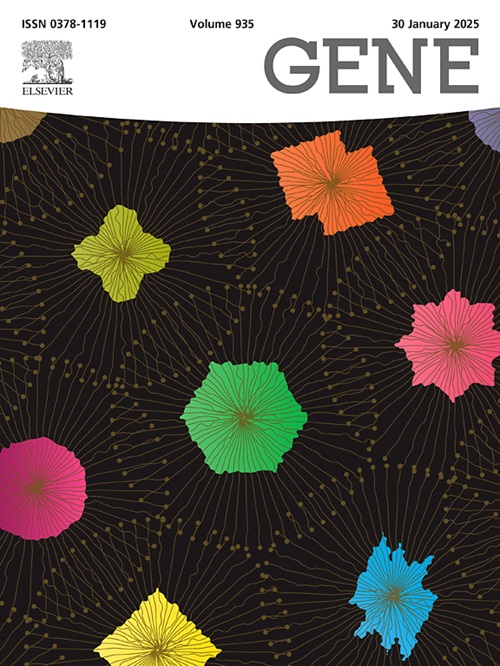Analysis of chicken LGALSL (galectin-related protein) gene’s proximal promoter and its control by Krüppel-like factors 3 and 7
IF 2.6
3区 生物学
Q2 GENETICS & HEREDITY
引用次数: 0
Abstract
The Galectin-Related Protein (GRP), encoded by the LGALSL gene, assigned to the protein family of β-galactoside-binding Galectins, has lost carbohydrate-binding abilities. Its chicken homolog (C-GRP) occurs in the bursa of Fabricius’ epithelial and B cells. Our study investigates the unknown regulatory mechanisms controlling its expression by analyzing the promoter region of the chicken (C-)LGALSL gene in chicken cells. We aimed to identify the sequence elements of the C-LGALSL gene promoter responsible for maximum activity and transcription factors (TFs) that can modulate this activity. Using luciferase reporter assays, we investigated deletion variants of the 5′ region (−2480 bp to +26 bp). Through in silico analyses and site-directed mutagenesis, we explored potential transcription factor binding sites, identified crucial transcription factors through transient overexpression and tested its direct binding by ChIP. Our findings highlight that the region from −274 to −75 bp, conserved among bird species, is crucial for promoter regulation. Among other tested factors, only the chicken (ch) Krüppel-like factors, chKLF3 and chKLF7, modulate the promoter’s activity. The TFs chKLF3 acts as a repressor, and chKLF7 as an activator, although direct binding could not be confirmed. In conclusion, chKLF3 and chKLF7 contribute, in contrast to other factors with binding sites in the region from −274 to −75 bp, to C-LGALSL gene promoter regulation with a balanced impact on activity.
分析鸡 LGALSL(galectin 相关蛋白)基因的近端启动子及其受 Krüppel 样因子 3 和 7 的控制。
由 LGALSL 基因编码的半乳肽酶相关蛋白(GRP)隶属于 β-半乳糖苷结合型半乳肽酶蛋白家族,但已丧失了与碳水化合物结合的能力。它的鸡同源物(C-GRP)存在于法氏囊上皮细胞和 B 细胞中。我们的研究通过分析鸡细胞中鸡(C-)LGALSL 基因的启动子区域,研究了控制其表达的未知调控机制。我们的目的是确定C-LGALSL基因启动子中负责最大活性的序列元件以及能调节该活性的转录因子(TFs)。通过荧光素酶报告实验,我们研究了5'区(-2480 bp至+26 bp)的缺失变体。通过硅分析和定点突变,我们探索了潜在的转录因子结合位点,通过瞬时过表达确定了关键的转录因子,并通过 ChIP 测试了其直接结合情况。我们的研究结果表明,从-274到-75 bp的区域在鸟类物种中是保守的,是启动子调控的关键。在其他测试因子中,只有鸡(ch)类克鲁珀尔因子(chKLF3和chKLF7)能调节启动子的活性。尽管不能确认直接结合,但chKLF3和chKLF7分别作为抑制因子和激活因子发挥作用。总之,chKLF3和chKLF7与其他结合位点位于-274至-75 bp区域的因子不同,它们对C-LGALSL基因启动子的调控对活性的影响是均衡的。
本文章由计算机程序翻译,如有差异,请以英文原文为准。
求助全文
约1分钟内获得全文
求助全文
来源期刊

Gene
生物-遗传学
CiteScore
6.10
自引率
2.90%
发文量
718
审稿时长
42 days
期刊介绍:
Gene publishes papers that focus on the regulation, expression, function and evolution of genes in all biological contexts, including all prokaryotic and eukaryotic organisms, as well as viruses.
 求助内容:
求助内容: 应助结果提醒方式:
应助结果提醒方式:


